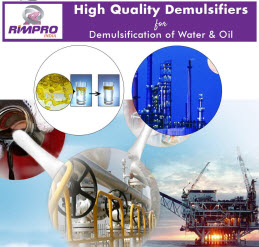 Menu
Menu
What's the Difference Between Demulsification and Emulsification?
Emulsification and demulsification are two fundamental processes in the world of chemistry and industry. Understanding the difference between these processes is crucial in various fields, ranging from food and cosmetics to petroleum and pharmaceuticals.
Emulsification is the process of combining two immiscible substances, typically oil and water, to create a stable mixture known as an emulsion. On the other hand, demulsification is the separation of an emulsion into its individual components, allowing the oil and water to separate. These processes play a vital role in multiple industries, making it essential to grasp their dissimilarities.
What is Emulsification?
Emulsification involves the creation of an emulsion by dispersing one liquid phase within another. This process requires the use of emulsifying agents, also known as surfactants, which help stabilize the emulsion by reducing the interfacial tension between the two immiscible liquids. Emulsification can occur through various techniques such as blending, homogenization, or sonication.
Examples of emulsification in everyday life include the mixing of oil and vinegar to create salad dressing, the incorporation of oil into mayonnaise, and the formation of milk by dispersing fat globules in water. Emulsions find extensive applications in the food, cosmetics, and pharmaceutical industries, where they enhance texture, stability, and delivery of active ingredients.
What is Demulsification?
Demulsification, on the other hand, is the process of breaking down an emulsion into its constituent phases, typically oil and water. This separation is achieved by employing demulsifying agents that destabilize the emulsion and promote phase separation. Demulsification is of significant importance in industries such as petroleum, where the separation of water from crude oil is carried out through demulsification processes. Various techniques, including heating, centrifugation, and the addition of demulsifying chemicals, are utilized to facilitate demulsification.

Differences between Emulsification and Demulsification
Emulsification and demulsification serve opposite purposes in the world of chemistry and industry. While emulsification aims to combine two immiscible substances, demulsification focuses on separating them. The following are the key differences between the two processes:
Purpose
Emulsification: The purpose of emulsification is to create a stable mixture by dispersing one liquid phase within another.
Demulsification: Demulsification aims to separate an emulsion into its constituent phases, allowing the individual substances to be extracted or processed separately.
Process
Emulsification: Emulsification involves the dispersion of one liquid phase into another with the help of emulsifying agents, reducing interfacial tension and stabilizing the emulsion.
Demulsification: Demulsification destabilizes the emulsion through techniques such as heating, centrifugation, or the addition of demulsifying agents, promoting phase separation and allowing the emulsion to break down into its individual components.
Applications
Emulsification: Emulsification finds applications in various industries, including food, cosmetics, and pharmaceuticals, where it is used to create stable mixtures, improve texture, and enhance the delivery of active ingredients.
Demulsification: Demulsification plays a crucial role in industries such as petroleum, where it is employed to separate water from crude oil, facilitating the extraction and refining processes.
Factors Affecting Emulsification and Demulsification
Several factors influence the success of emulsification and demulsification processes. These factors should be carefully considered and controlled to achieve desired outcomes:
Temperature
Temperature plays a significant role in both emulsification and demulsification processes. In emulsification, temperature affects the viscosity of the liquids, the stability of the emulsion, and the effectiveness of emulsifying agents. In demulsification, temperature impacts the rate of phase separation, with higher temperatures generally promoting faster demulsification.
pH Level
The pH level of the system can influence emulsification and demulsification processes. Different pH values can alter the interfacial tension between the phases, affecting the stability of emulsions and the efficiency of demulsifying agents.
Concentration of Emulsifying/Demulsifying Agents
The concentration of emulsifying or demulsifying agents used significantly impacts the success of the processes. Optimal concentrations ensure the stability of emulsions during emulsification and promote efficient phase separation during demulsification.
Agitation
Agitation, whether through stirring, blending, or other mechanical methods, is crucial in promoting emulsification and demulsification. Agitation helps to disperse the immiscible liquids, facilitate the interaction between emulsifying or demulsifying agents and the phases, and enhance the overall efficiency of the processes.
